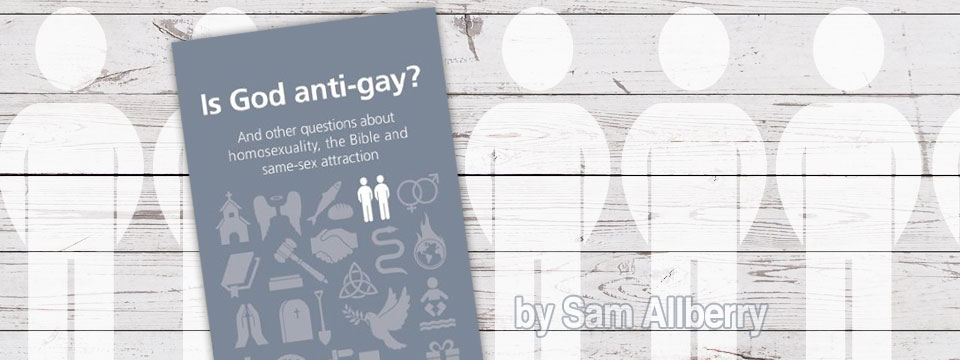Recently there has been so much said and written about homosexuality from differing perspectives, including various Christian perspectives, that some have wished the topic to disappear from the public landscape. But it is not going away and it must not go away, especially in the Church. The Church cannot stick its head in the sand, hoping that somehow homosexuality and the challenges that accompany it will cease to exist.
To begin with, many of these challenges are coming from professing Christians, resulting in a lot of confusion among those who are Christians. As one example among many, simply go to YouTube and type in the name Matthew Vines and watch him give an emotive and seemingly well-thought-out talk on why a person can be unashamedly gay and be a Christian. The New York Times picked up on this presentation, and in an interview with the paper, Vines stated, “It is simply a fact that the Bible does not discuss or condemn loving, gay relationships.”
Not only is there confusion in many churches about whether homosexuality is to be received, redeemed or rejected, but also there are many who attend churches who struggle with homosexuality. They know what the Bible means, and they know what their church believes, and yet they experience same-sex attraction. Some of us can only imagine, but that could be a very difficult and discouraging personal conflict.
Then, there is the concern that all Christians should share, namely, how might we love and help those who struggle with same-sex attraction? What do we say and do to help those who are at war within themselves over what the Bible teaches and what they feel and desire?
Given the need to love others and address the present and increasing challenges of homosexuality for the church, Sam Allberry, Associate Pastor of St. Mary’s Church in Maidenhead, UK, has provided a concise and comprehensive testimony-resource that meets the need of the moment. I strongly recommend, Is God Anti-Gay; And Other Questions About Homosexuality, the Bible and Same-Sex Attraction, for a several reasons.
First, the book is brief. At a mere 83 pages, Allberry still manages to address homosexuality from a Christian perspective in a robust way. Having said that, and with the title in mind, this is not the best option as a reference resource for the purpose of making sense of the disagreements about what the Bible says about homosexuality.
For an in-depth examination of what the Bible means, a book like Robert A. Gagnon’s, The Bible and Homosexual Practice: Texts and Hermeneutics, will be of better service. However, this does not mean the book does not provide biblical insight, especially if a person is new to the biblical discussion on homosexuality. For example, in the second chapter, the six main biblical texts (Gen. 19; Lev. 18 and 20; Rom. 1:18-32; 1 Cor. 6:9-10; 1 Tim. 1:8-10) that speak about homosexuality are explained in a concise and clear way.
Second, Allberry speaks to the struggles from the perspective of being a Christian who has experienced same-sex attraction but is not submitting to those desires because of the difference God has made in his life. This not only lends credibility to the greater message of the book, but it also serves as a testimony of hope to those who are living with same-sex desires. Additionally, because Allberry frequently references his personal life, the book often reads as a personal story which makes it easier to read.
Third, Allberry frames the whole discussion of the book in the context of what the Bible has to say about marriage. This is not particularly a book about whether homosexual marriage ought to be lawfully recognized, but it does address the fact that sexuality is a healthy part of life when it is understood and practiced within the protective, biblical boundaries of marriage. Consequently, the book not only instructs readers about homosexuality, but it is additionally worth reading for the way it explains God’s loving intent for marriage and sex.
Finally, the book takes on many of the common questions, concerns and arguments surrounding the Bible, the church and homosexuality. Those paying attention have probably heard questions like: “Is a same-sex partnership OK if it’s committed and fruitful?” “But Jesus never mentions homosexuality, so how can it be wrong?” “Aren’t we just picking and choosing which Old Testament laws apply?” “What should I do if a Christian comes out to me?”
Additionally, Allberry gives very helpful advice about how to help people who are struggling with same-sex attraction. This advice deserves the attention of the reader because of the author’s own story and his firsthand interactions with others who have personally navigated the tension of same-sex desires and honoring the Bible.
Is this the best resource as a comprehensive approach to the issue of homosexuality? Here is my answer as a pastor. If someone in ministry were going to teach on homosexuality and asked for a resource recommendation, this would be the first book I would recommend. Why? Because the “discussion” about homosexuality is about more than being right or wrong. It is great to make a point, but it is just as important to make a difference. Allberry helps the reader do both by showing us how to love people with the truth.
